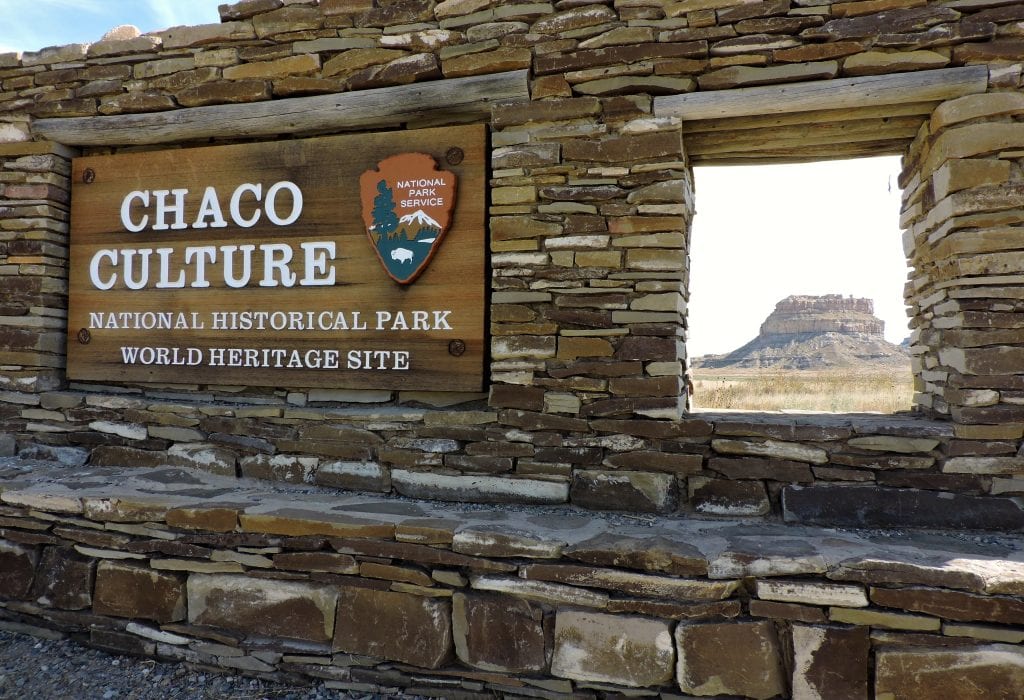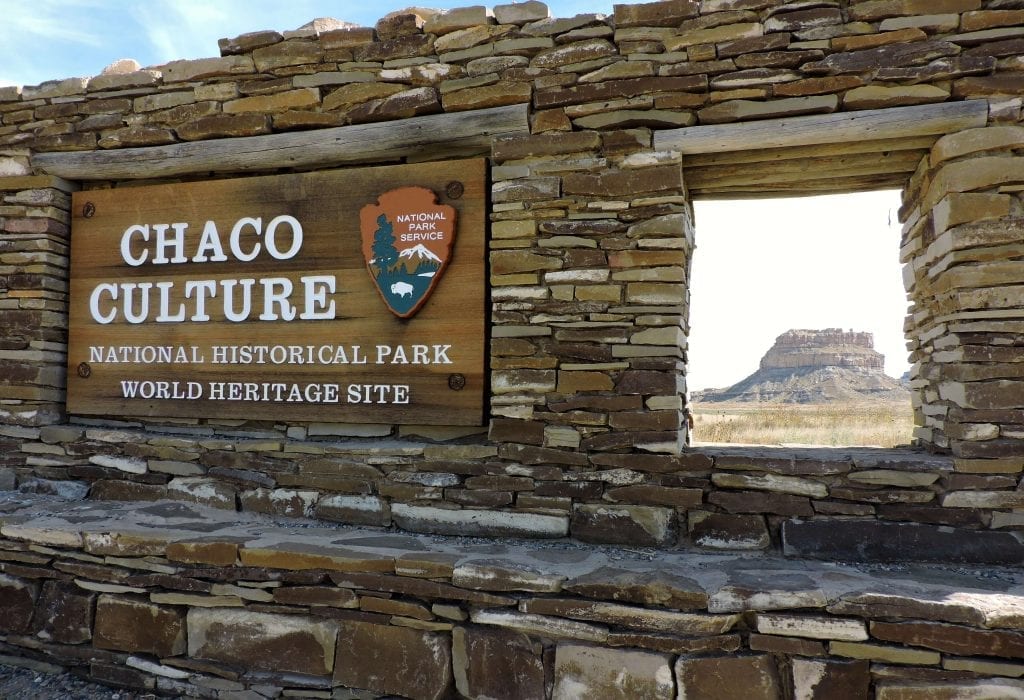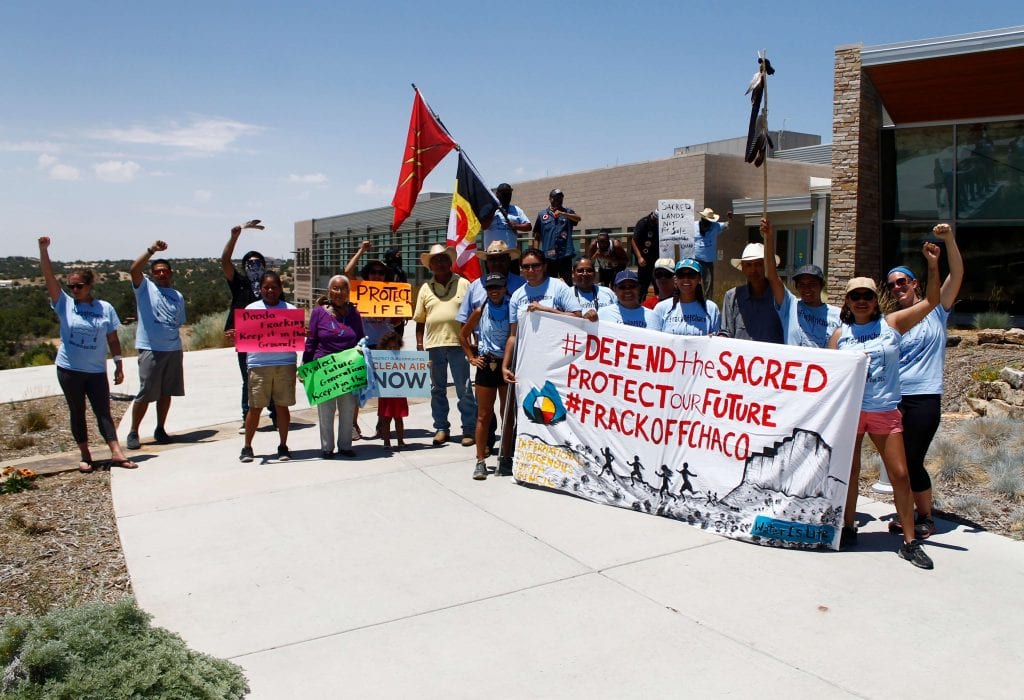[BREAKING: Speak out today to defend Greater Chaco from fracking! Tell the U.S. Bureau of Land Management and Bureau of Indian Affairs NO MORE BROKEN PROMISES!]
[And PLEASE, support COVID-19 relief efforts in the Far Eastern Chapters of the Navajo Nation, click here to donate >>]
The Trump Administration’s push to open up public lands for fracking has hit a callous new low in the Greater Chaco region as the U.S. Bureau of Land Management barrels ahead to approve more than 3,000 new oil and gas wells even as impacted Indigenous communities bear the brunt of a major COVID-19 outbreak.
Greater Chaco
The Greater Chaco region of northwest New Mexico is the sacred heart of the American Southwest. It’s home to Chaco Canyon and Chaco Culture National Historical Park, a UNESCO World Heritage site. Over a thousand years ago, it was the realm of the Chacoan people, the ancestral Puebloans who constructed kivas and dwellings across the landscape.
Today, Pueblo people still maintain a living and spiritual connection to the landscape and it sustains Navajo and New Mexico communities.
While Chaco Canyon is at the core of the Greater Chaco landscape, the “Chaco World” extended far beyond, even into northeast Arizona, southwest Colorado, and southeast Utah.
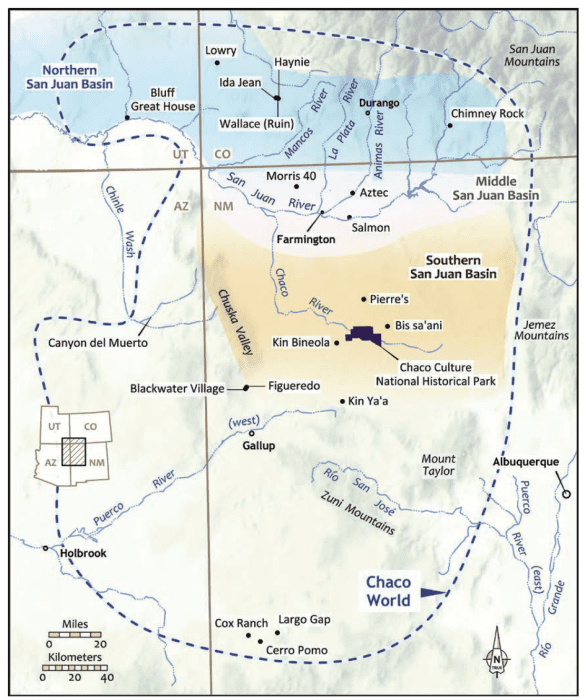
This map is only an illustration of the expansive Greater Chaco region. The true extent of the Chaco World can never be fully known. Map courtesy of Archaeology Southwest.
Sacred Lands Under Siege by Fracking
For years now, Greater Chaco has been under attack by the oil and gas industry.
With the advent of hydraulic fracturing, or fracking, companies have tapped previously unreachable geologic formations using destructive industrial development. Much of this development has occurred under the watch of the Bureau of Land Management, which oversees more than two million acres of public lands and minerals in the region.
Since 2013, the Bureau of Land Management has permitted more than five hundred fracking wells in Greater Chaco. With more than 90% of all lands in the region leased to the oil and gas industry for drilling, the threat looms large.
Click here to see a map of existing oil and gas wells in the Greater Chaco >>
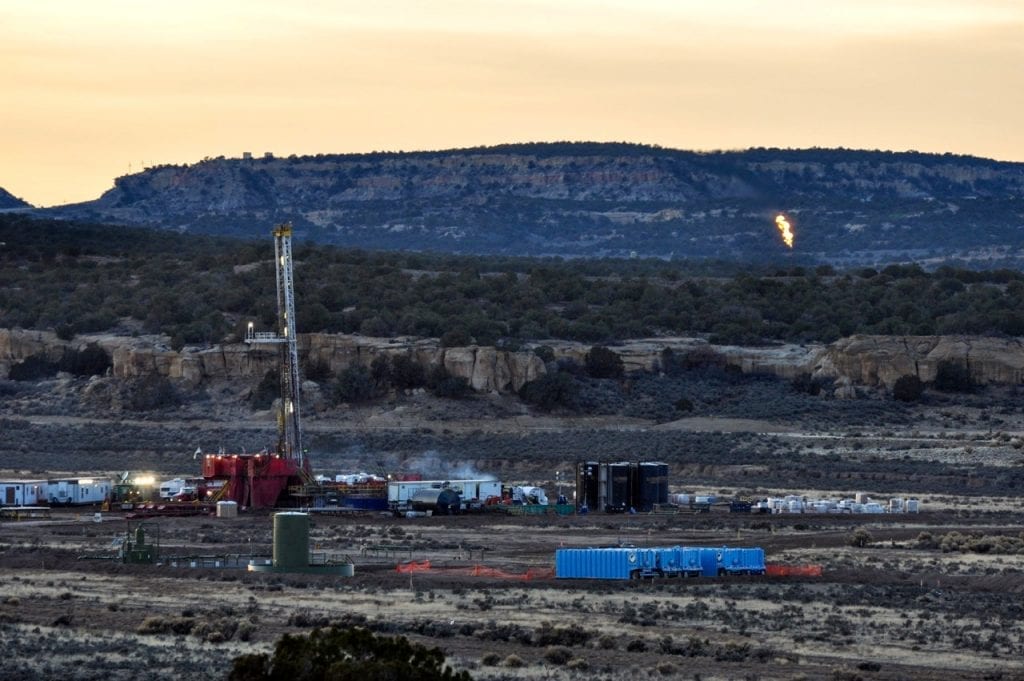
Fracking in the Greater Chaco region. Photo by Mike Eisenfeld.
This drilling has utterly transformed and degraded the landscape, fueling more air pollution, more safety concerns, more truck traffic, and more industrial development where there previously was none.
It’s also put the health and welfare of adjacent Navajo communities more at risk than ever.
Frack Off Chaco
Fortunately, the Bureau of Land Management’s relentless push to drill and frack in Greater Chaco has galvanized a movement.
To begin with, the Frack Off Greater Chaco Coalition emerged, uniting Indigenous community leaders, Native groups, nonprofits, and public lands and water protectors around the call to stop fracking in the region.
As part of this coalition, we joined with Diné Citizens Against Ruining our Environment, San Juan Citizens Alliance, NRDC, and the Western Environmental Law Center to win an unprecedented legal challenge to fracking in Greater Chaco.
Most recently, the Navajo Nation and All Pueblo Council of Governors, National Congress of American Indians, 15 Navajo Chapter Houses, the New Mexico Legislature, the New Mexico State Land Office, and over 500,000 people have called on the agency to stop fracking Greater Chaco.
Federal legislation was also introduced by New Mexico’s Congressional Delegation to increase protections. Called the Chaco Cultural Heritage Area Protection Act, the bill would take the first steps toward protecting this landscape by making the 10 mile area around Chaco Canyon off limits to drilling.
“It’s important that we protect Chaco Canyon, both because it is a sacred place that should be valued the same way we value other sacred places, but also because public lands must be protected.”
– New Mexico U.S. Representative, Deb Haaland
At one point, even the Bureau of Land Management seemed to be coming around.
In 2013, the agency announced it needed to update a 2003 management plan for the Farmington Field Office, which encompasses most of the Greater Chaco region. Promising to be accountable to Tribes and the public, the Bureau of Land Management, together with the Bureau of Indian Affairs, committed to strengthening safeguards to protect cultural values and health.
From October 2016 to February 2017, the agencies held 10 public meetings and received thousands of comments to guide the development of the new plan.
In response, the agencies released a “scoping report,” promising the new plan would address climate change, water and soil resources, environmental justice, the “Chaco Cultural Landscape,” public health and safety, Tribal interests, truck traffic and road conditions, wildlife, and other issues impacted by fracking.
Broken Promises
Sadly, the agencies have now reneged on their promises.
In March, the Bureau of Land Management and Bureau of Indian Affairs released their draft management plan. Sadly, the plan opens the door for more fracking and stands to leave the cultural integrity and health of the Greater Chaco region more vulnerable than ever.
Under the various alternatives, the agencies project between 2,345 and 3,101 new oil and gas wells in the Farmington Field Office.
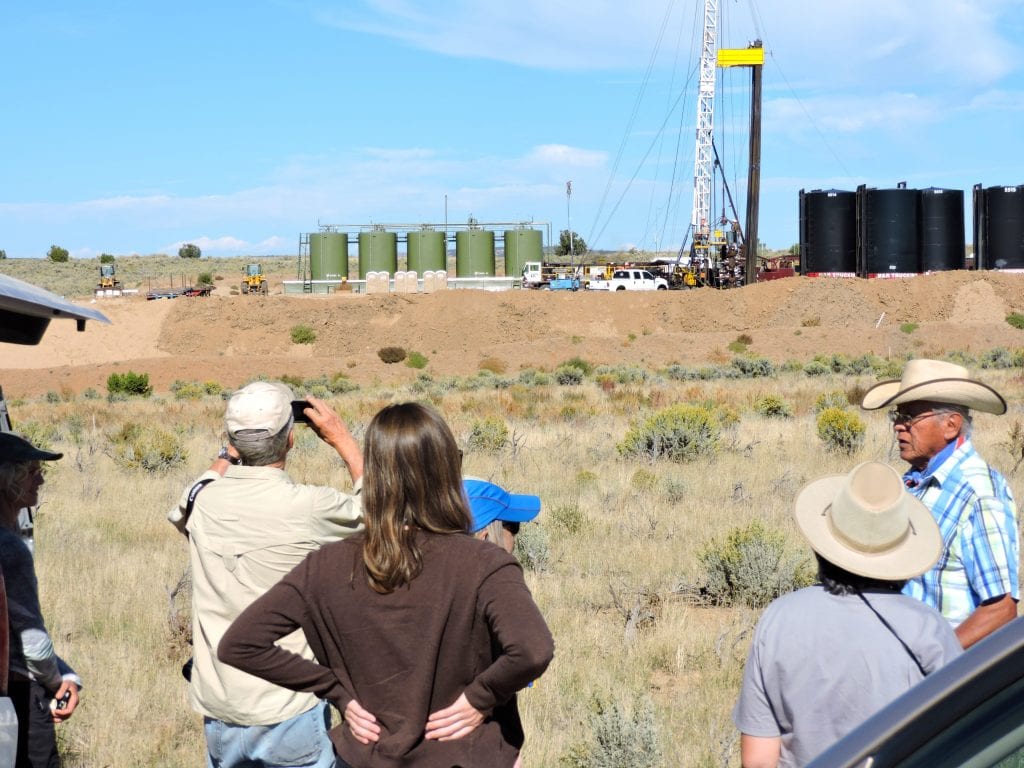
More oil and gas wells portend more health threats to Navajo and New Mexican communities in the Greater Chaco region.
While the agencies’ “preferred alternative” claims that “human health and the environment” are among chief objectives, this plan still proposes 3,068-3,085 new wells.
The plan would also make nearly a million acres available for sale to the oil and gas industry for more extraction. Many of these lands are in or near Navajo communities.
More Fracking in the Midst of a Health Crisis
The Bureau of Land Management’s proposed plan would sacrifice the Greater Chaco region’s cultural integrity, endanger communities, and jeopardize clean air, water, and the climate.
What’s worse is that the agency is plowing ahead to approve more fracking even as Indigenous communities are struggling with an outbreak of COVID-19.
Citing the burden of managing the COVID-19 health crisis within Tribal communities, there has been a near-unanimous call for the Bureau of Land Management and Bureau of Indian Affairs to extend the public comment period for its proposed plan. Tribal officials, Congressional leaders, state and local officials, and the general public have all spoken out.
In response, the agencies rejected the requests and instead scheduled a series of “virtual” public meetings, a move that has been widely condemned.
Pointing to a lack of adequate internet access within Tribal communities and the ongoing strain of the coronavirus pandemic, leaders, like U.S. Representatives Deb Haaland and Raul Grijalva, have ripped the agencies over their lack of compassion and sensitivity.
Not surprisingly, as the virtual meetings have unfolded, the Bureau of Land Management and Bureau of Indian Affairs have faced heated criticism. Tribal leaders, local officials, and members of the public have overwhelmingly delivered the message that the agency’s so-called public engagement is shameful, insulting, and racist.
#NewMexico Pueblo leaders resoundingly speaking out against @BLMNewMexico plans to expand fracking in #GreaterChaco region of NW New Mexico. Santa Clara Pueblo rep reams out agency! pic.twitter.com/hO00l5Ct0v
— WildEarth Guardians' Climate and Energy Program (@ClimateWest) May 15, 2020
A Call to Action
In the meantime, we’re stepping up the resistance more than ever.
Earlier this month, we filed a new lawsuit in federal court targeting the Bureau of Land Management’s approval of hundreds of new fracking wells.
And in the past few weeks, WildEarth Guardians, the Sierra Club, NRDC, San Juan Citizens Alliance, and many other organizations have reached out to millions of people calling on them to speak out and weigh in.
The big news is that on May 27, 2020, the Frack Off Greater Chaco Coalition will hold a People’s Hearing to Defend Greater Chaco, where it’s intended to provide a forum for all people to weigh in and interact.
While the hearing will be virtual and held over Zoom, the Coalition intends to read any and all comments submitted by people, to play videos or audio submitted, and to overall give people a forum to actually speak out.
Unlike the Bureau of Land Management’s virtual public meetings, there will be no time limits for public comment, nobody’s video turned off, and certainly no dead silence or elevator music.
Watch the video below to learn more about the People’s Hearing to Defend Greater Chaco!
We’re not going to back down until we’ve secured the protections the Greater Chaco region needs and deserves.
That means that we won’t relent in defending Greater Chaco until the Bureau of Land Management has agreed to stop selling public lands for fracking, has agreed to landscape-level cultural protections, and has agreed to wind down and ultimately phase out fracking entirely in the region.
